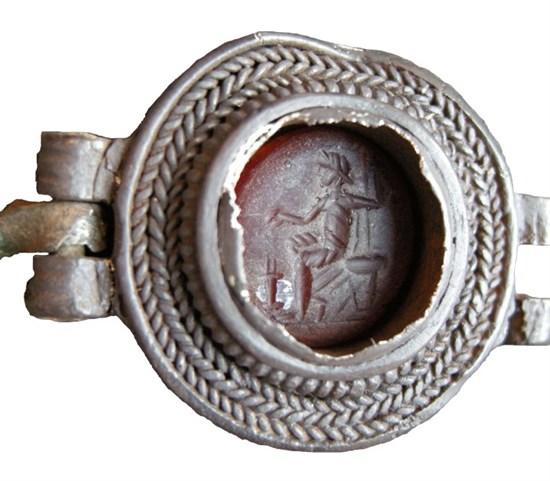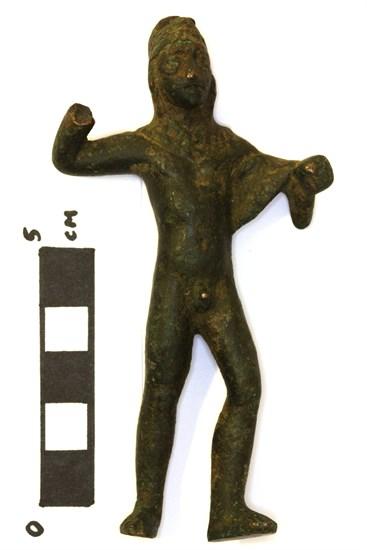Romans
Roman Treasure
In July 2012 a fabulous Roman bracelet was found in the Dalton area by a metal detectorist.
Nothing quite like this has been found in Furness before. It is a silver bracelet dating from the 2nd or 3rd century AD, when the Romans controlled "Britannia". This wonderful object went on display in our archaeology gallery.
In the gem stone is engraved an image of a seated Jupiter, with wreath and full-length drapery, holding a sceptre in his left hand. In his extended right hand he holds a patera above a stylised flaming altar. Both emperors and divinities are frequently depicted in Roman imagery pouring libations (offering to the gods) from a patera. Jupiter is the father of Hercules in ancient Roman religion and myth.


Were the Romans in Furness?
There is no conclusive proof that the Romans were in Furness. No Roman building or structure has been found to date. But some intriguing objects have been found like the statuette of Hercules near Furness Abbey (see left, BAWFM.04215).
Was Furness a Roman no-go area? Too poor to warrant attention and easily controlled by a ring of forts at Lancaster, Kendal, Ambleside and Ravenglass? There is still no evidence of a definite Roman military camp in Furness. However, there may have been a naval signal station to help guide sea traffic between Lancaster and Ravenglass. Possible sites are Aldingham, Piel or South Walney. Any such station would have been a wooden structure, easily decayed, or possibly swept away by sea erosion.
The Celtic people in the north of England were known as the Brigantes, but this was a general term for a collection of sub-tribes. It is now thought that the Celts of the north-west, including Furness, had a pact of non-aggression with the Romans and settled down to trade with them.
Furness has thrown up an impressive array of Roman coins, and maybe there weren't a network of forts in our peninsula - at least at first. There was, however, clearly commercial intercourse with the occupiers. But there is enough evidence "to keep alive the enigma of whether or not Furness supported Roman sites”.
